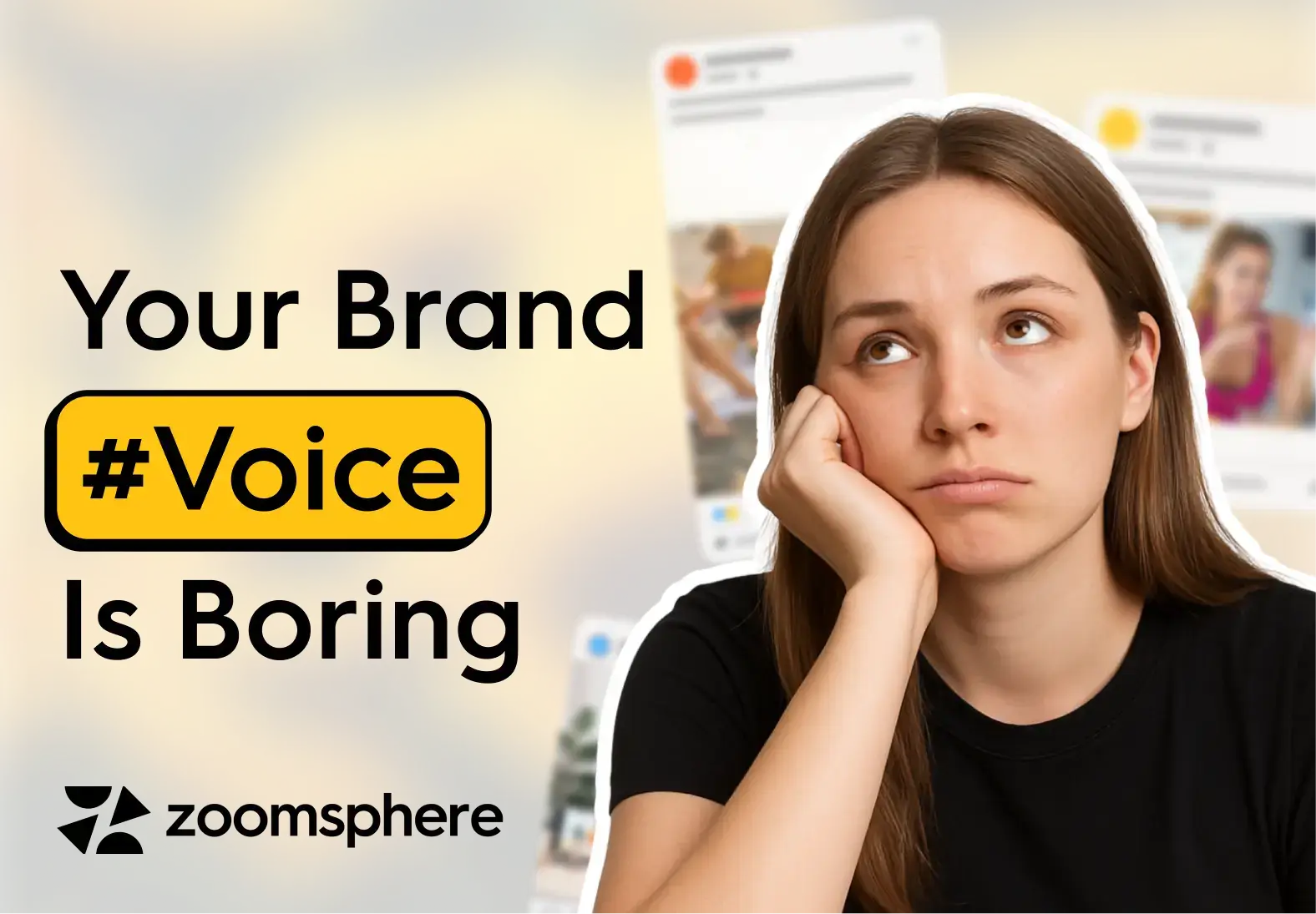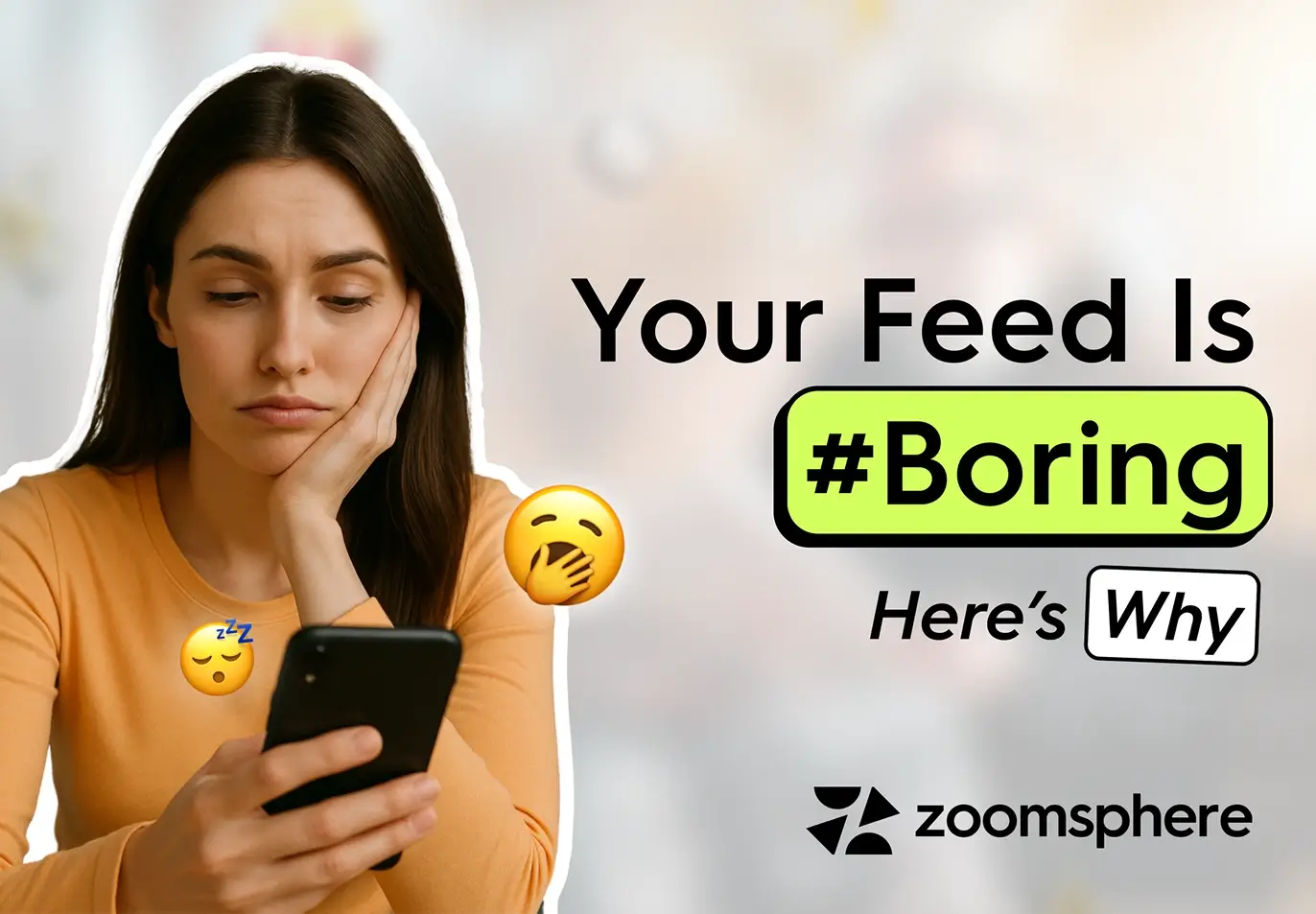#Strategy
Thank you! Your submission has been received!
Oops! Something went wrong while submitting the form.


Blog
How the Best Brands Speak—and Get Heard
%20(1)%20(1).webp)

Blog
Is Influencer Marketing the Lazy Way Out?
%20(1).webp)

Blog
What Most CEOs Still Don’t Get About Social Media Management


Blog
How Much Social Media Content Collaboration Is Too Much?


Blog
Stop Using Content Curation to Cover Up Lack of Ideas
.webp)

Blog
Cringe Marketing: Why Brands Are Embracing Weird, Unhinged Strategies in 2025
%20(1).webp)

Blog
Clickbait Titles Aren’t the Problem—Your Content Just Doesn’t Deserve the Click
.webp)

Blog
Stop Begging for Attention! Here’s How to Turn Scrolls into Sales with Shoppable Posts
%20(1).webp)

Blog
Brand Rivalries in Marketing Campaigns Don’t Sell Products—They Sell Bragging Rights
.webp)

Blog
Is Your Local Business Ready? How TikTok's Expansion into Local Services Could Change Everything
%20(1).webp)

Blog
Food in Marketing: Non‑Food Brands Cooking Up Clever Campaigns
%20(1).webp)

Blog
Apologize, Backtrack, or Double Down? Cancel Culture Is Forcing Brands to Pick a Side
%20(1).webp)

Blog
If Featured Snippets Aren't in Your SEO Strategy, You're Already Losing
%20(1).webp)

Blog
The Dos and Don’ts of Trendjacking: How to Steer Clear of Social Media Scandals
%20(1).webp)

Tips & Tricks
How to Make Viral Content | 7-Step Strategy for 2025
.webp)

Blog
Brand Loyalty Programs: Are You Nurturing Loyalty or Just Feeding Greed?
%20(1).webp)

Blog
No Ads, No Problem? How Brands Survive an Ad-Free Social Media
%20(1).webp)

Blog
Why Your 'Flawless' Ads Are Failing
%20(1).webp)

Blog
How to Tease a Product without Overselling—But Still Leave Them Obsessed
%20(1).webp)

Blog
Minimalist Marketing Strategies: How Brands Win with Simplicity
%20(1).webp)

Blog
Before You Complain About Sales, Check Your Social Commerce Strategy
%20(1).webp)

Blog
Should Your Brand Be Controversial? 6 Marketing Lessons from Goop’s Strategy
%20(1).webp)

Blog
How to Build Customer Communities That Competitors Can't Copy
%20(1).webp)

Blog
If Multichannel Marketing Is So Great, Why Are Your Results So Bad?


Blog
5 Influencer Marketing Strategies That Work (Even If Your Brand Isn’t ‘Cool Enough’)
.webp)

Tips & Tricks
Top 5 Social Media Mistakes Hurting Businesses | Fix Them Now
%20(1).webp)

Blog
Viral Marketing Campaigns 101: How to Cause Chaos and Still Stay on Brand


Blog
Marketing with Memes: The Low-Cost Tactic That’s Making Big Brands Nervous
%20(1).webp)

Blog
Marketing to Gen Z: Do’s and Don’ts
%20(1).webp)

Tips & Tricks
The Best Marketing Strategy for 2025 | Content Repurposing
No results found.
No content matched your criteria. Try searching for something else.
Don’t #miss out
Get our newsletter delivered right to your inbox! Stay up to date with our newest features, content, and more!
Thank you! Your submission has been received!
Oops! Something went wrong while submitting the form.







